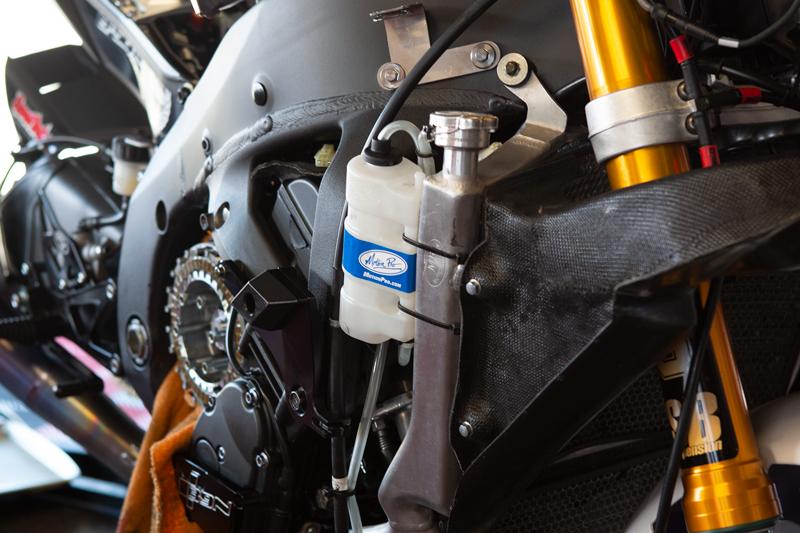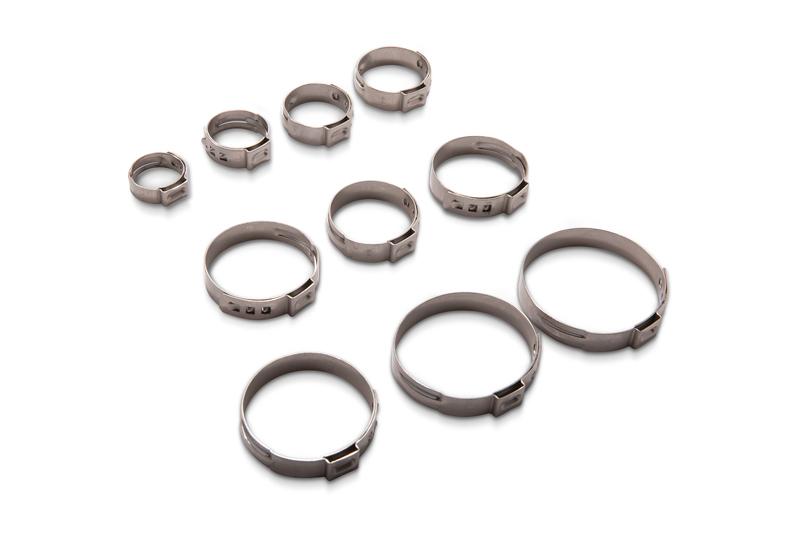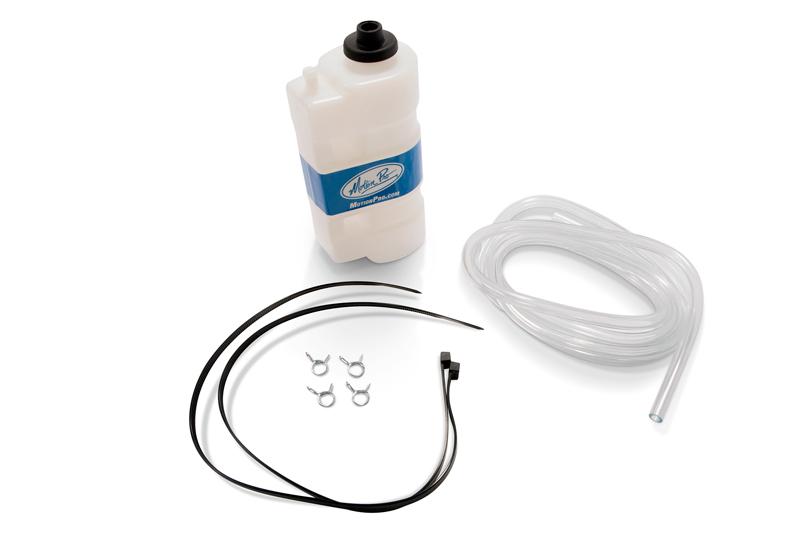Tech Tip: Help Your Bike Keep Its Cool
If your motorcycle or ATV is water cooled, you know how important it is to make sure you have enough coolant in your bike. But did you know that just checking the reservoir on occasion is not all that it takes? Coolant wears out and gets dirty after a while, just like the oil in your engine. If you don’t keep it fresh it’s possible to damage the engine or corrode the cooling system. Coolant should be changed at least once a year, but the frequency is determined by how much and how you ride. Changing your coolant is basically the same procedure as changing your oil with a couple of small differences. First things first: Get out your factory service manual and go through the recommended procedure, as every bike is different, and there can be special procedures unique to your motorcycle.
Draining and flushing the coolant should always happen with your engine cold you don’t want to burn yourself on hot coolant! Also, a hot engine will pressurize the cooling system, leading to a risk of coolant erupting out of the cap when opened, another reason to never start this procedure on a motorcycle that is hot. Most bikes will have a drain plug at the lowest point in the cooling system, and you also have to remove the radiator cap to allow the system to drain. Make sure to use a catch pan, and don’t just dump the coolant on the ground or into the sewer. It is a toxic chemical and needs to be disposed of properly, just like old engine oil. Rocking the bike to one side or the other can help drain any remaining coolant in the system.

Factory supported road race teams are keeping their cooling systems at peak performance with the Motion Pro Coolant Recovery Tank
There are a couple of minor jobs that can be performed when the cooling system is dry that might be handy to do now. One of them is to inspect and test the thermostat. The thermostat opens and closes to maintain the proper engine temperature and aid in warm up; one that is malfunctioning can lead to overheating. Your service manual will have the procedure for testing the thermostat, but in a nutshell, you need to remove it and test it in a pan of hot water with a thermometer to see at what temperature it opens and closes. Look at it closely for wearing parts or corrosion too, because it should be replaced if there is any doubt.
Another job to perform now is an inspection of the cooling hoses to make sure they are in good condition. Any wear or cracking means that hose should be discarded, and a new one installed. It is also a good idea to inspect all of the clamps holding the hoses. We recommend using Stepless® ear clamps because they are more secure, have a lower profile, and are easier to install than standard hose clamps. Motion Pro carries a full line of Stepless® clamps for motorcycle and ATV applications and the tools you need to install them.

Cooling System Stepless® Clamp Kit Part No. 11-0065 Includes: 14.8mm to 18.0mm range (10 pcs), 17.8mm to 21.0mm range (10 pcs), 20.9mm to 24.1mm range (10 pcs), 23.9mm to 27.1mm range (10 pcs), 26.9mm to 30.1mm range (10 pcs), 29.9mm to 33.1mm range (10 pcs), 32.9mm to 36.1mm range (10 pcs), 36.4mm to 39.6mm range (5 pcs), 40.8mm to 44.0mm range (5 pcs) and 43.8mm to 47.0mm range (5 pcs)
Once you go through all of the mechanical components, flushing the system once with clean water will ensure a thorough cleansing. Reinstall the drain screw and fill the system with water only. Start the bike and run it for a short period of time, but do not allow the engine temp to reach over 100 degrees. The goal is to run the bike long enough to flush the system but not enough to burn yourself when you drain it. Turn off the bike, remove the drain plug again and drain out all the water. Your system should be completely flushed of all the old coolant now.
A word about coolant: There are many different types and brands of coolant available for your motorcycle. For general use, standard glycol coolant is the best choice, especially in areas where the temperatures may drop to freezing or below in the colder months. Nothing will protect your engine from freezing as well as a standard glycol coolant. Be sure to check your vehicle’s owners manual and use the type of coolant recommended by the manufacturer. Some of the automotive anti-freeze coolants have silica in them to combat corrosion in cars, but can damage the smaller and more delicate seals in a motorcycle cooling system. There are many other types of coolants that can help reduce engine temps but they may not protect the engine as well from freezing or corrosion.
Another important point: Use distilled water in your cooling system! Tap water or regular bottled waters have varying levels of minerals and salts in them that will damage your engine when they are precipitated out by the heat cycles of your engine. Using distilled water will eliminate this issue and help you to avoid costly repairs down the road.
Okay, time to get back to work. The system is now flushed and everything is assembled properly. Take your coolant mixture and start refilling the system. It’s very important to get all of the air out of the cooling system! Some engines have a bleed screw at various locations in the cooling system to allow air to escape. Consult your service manual to see if your bike has a feature like this. Leaning the bike away from the filler cap can help get air out of the radiator. Fill it so that the coolant is just below the sealing surface of the filler neck.
With the radiator cap off, it’s time to start the bike again and get the last few bubbles of air out. Once again, you have to be very careful to not allow the coolant to get too hot. Running it for a minute or two with the cap off should get the last of any remaining air out. Top off the fluid if necessary and replace the radiator cap, making sure it is completely closed. Run the engine again for a few minutes until the bike is completely up to running temperature, and keep a sharp eye out for any leaks. If there are no leaks, it’s time for the test ride! Keep a close eye on the temperature gauge to make sure you don’t have any problems with overheating. If the temp holds steady, and there are no leaks in the system, you’re all set. Congratulate yourself on a job well done!
Product Tip: Motion Pro makes an excellent, compact Coolant Recovery Tank for those bikes that do not have one stock, or if you want to change the standard one that came with the bike. The Coolant Recovery Tank has a 275cc capacity, and can be installed in a variety of configurations depending on the installation. It also has built in mounting holes and its compact size makes it easy to install.
Check out our complete line of Cooling System Tools and Accessories:

